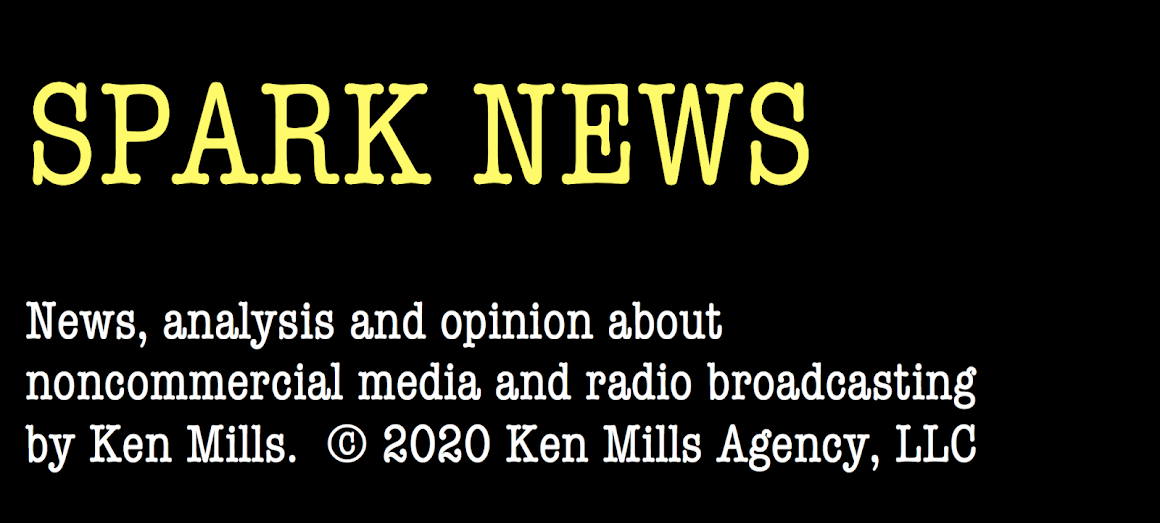Earlier
this week [link], we reported about four college radio stations that have gone
silent or are considering signing off.
Though this trend has been happening for more
than a decade, lately the number of college stations vanishing seems to
be increasing.
The
major reason why universities are pulling the plug is that the leaders of universities feel that their "campus"
station brings nothing of value to the institution.
In other words, they are expendable.
Colleges
and universities are experiencing budget contractions that force administrators
to make tough choices.
Looking at the ROI, the “return on investment”, often
makes the decisions. Many college stations offer no good reasons why their
university should continue funding them.
Most
of the institutions are what we call “accidental broadcasters.” They acquired
their FCC licenses in the 1970s and 1980s when the cost of entering the radio
business was much cheaper. Now, when higher education budgets are so tight,
“accidental broadcasters” tend through in towel rather than investing any more
money in the stations.
For instance, we recently reported that the University of the
South, located in Sewanee, Tennessee, mailed the license for their student
station (WUTS) back to the FCC. The
university announced the give away while students were on the Christmas break.
We
know that there is many other college radio stations that are, or will soon,
face the same existential threat. So, it seems like a good time to suggest ways
college stations can increase their perceived value to their licensees.
BEST PRACTICES FOR
COLLEGE STATIONS TO SIGNAL VALUE TO THEIR LICENSEES
Just
to be clear, we are talking about only stations that are licensed by the FCC. Online
and carrier-current stations exist in their own realities.
 |
| David Black |
To
provide a real world perspective we are joined by David Black, GM of WSUM at
the University of Wisconsin in Madison.
WSUM is not a
typical college station, However, their successes might be adapted elsewhere
We
asked Black how WSUM shows its value to the leaders of UW.
Black: “Until last year, it was easy to communicate the value to the licensee
because all 27 campuses in the UW System are governed by the Board of Regents.”
“However, the UW System
has recently was decentralized, so we don't deal directly with the licensee in
that way now. We instead deal with UW-Madison campus, which acts on
behalf of the Regents when it comes to our license.”
• BEST PRACTICE: MAKE
CERTAIN EVERY ONE AGREES WITH THE MISSION STATEMENT, PARTICULARLY THE
ADMINISTATION
Black
told us that the key is making certain that everyone involved knows and agrees
with the station’s mission statement:
Black: “We fill out an extensive number of budget applications and
provide mid-year and end-of-year reports. The documents offer us the
opportunity to show how our actions are in line with our mission.”
“UW-Madison has a mission
that may not be unique, but is aptly encapsulated thusly:
Quoting from UW’s Mission Statement: “We believe that the great state University of Wisconsin should ever encourage that continual and fearless sifting and winnowing by which alone the truth can be found.”
“The fact that the UW has
the fearless search for truth in its mission, it gives us a true north
principle for executing our mission.”
“We try to ‘live our
mission’ by having it posted in two different places in the station and
referring to it more than occasionally.”
• BEST PRACTICE: WATCH
FOR “LICENSEE FATIGUE”
Black: “We are very much a believe in preventing the kinds of issues that
create 'licensee fatigue.’ These include indications that university leaders have
grown tired, or maybe bored, of being responsible for the station. We simply
had to do everything right from the beginning, so we have always been
'justifying our existence' from the very start.
One way to deal with this
reality is to put something new on the table. We recently talked with UW’s
senior management about our desire to expand our outreach people in the entire
Madison metro area.
BEST PRACTICE: REMEMBER
THAT UW STUDENTS ARE THE CORE CONSTITUENCY
 |
|
Screen-shot
from WSUM’s “Welcome” video
|
Black: “Our annual budget is around $395,000. The top sources of
funds are student fees, underwriting and members. Our ‘Friends’ foundation also
receives donations.”
“We let UW students know
that we consider them to be our bosses. We see our constituency to be as
important because we are an educational station.”
“As a way of providing extra
value to our student population, we have added online-only streams of music and
sports broadcasts. Plus we offer a variety of podcasts.”
GOOD ADVICE FROM WSUM’s
MEDIA KIT
DESCRIBE WHO LISTENS TO
WSUM?
40,000+ students, young
teachers, and esteemed professors at UW-Madison • 15,000+ students, young
teachers, and esteemed professors at other local colleges
• Madison’s nest
urban professionals, parents, and high school students • Dane County and the
greater metro area
TELL LISTENERS ABOUT
SPECIFIC THINGS THAT THEY SUPPORT
• Strengthening WSUM’s on-air signal
• Maintaining WSUM’s online streaming
• Providing an opportunity
for 150+ students and community members to
engage in broadcasting
• Supporting
WSUM’s Snake on the Lake festival in September
HAVE AN UNDERWRITING PLAN
THAT REFLECTS THE STATION’S TRUE VALUE
• Credits cost $30 per
spot
• The cheapest spot is
$11, in a long-term package

























